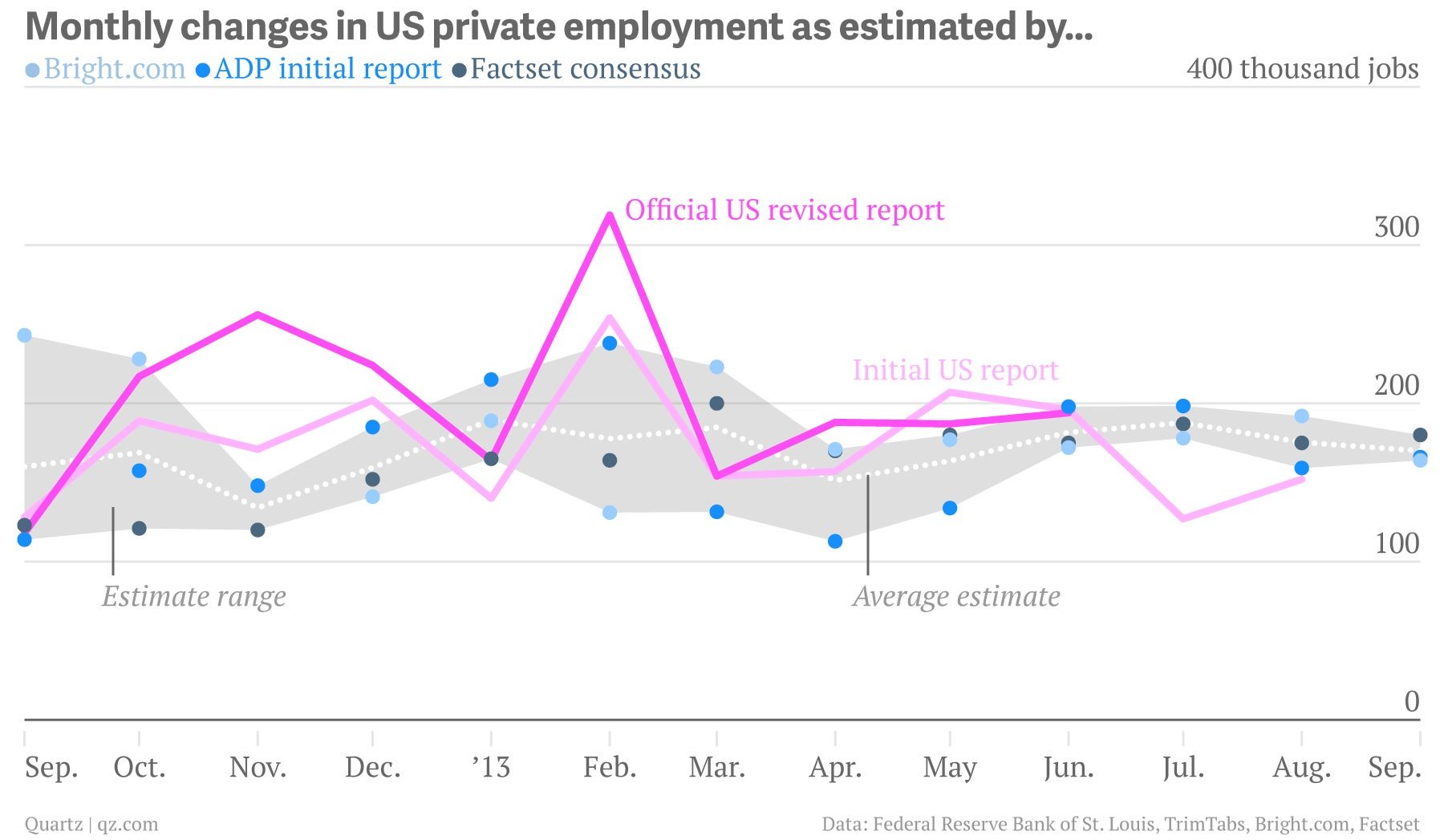Your alternative US jobs number: 170,000ish
With the US government shut down, the official purveyor of US employment figures—the Bureau of Labor Statistics—cannot provide the monthly jobs report today.

With the US government shut down, the official purveyor of US employment figures—the Bureau of Labor Statistics—cannot provide the monthly jobs report today.
The BLS report has credibility not because it has access to information no one else does or because its methods are much better than anyone else’s but simply because it is part of the government.
To calculate the number of people employed in the US, the BLS surveys more than 500,000 establishments through various means—phone, fax, internet and other electronic systems. The BLS says its sample size is one-third of the “employment universe.” It revises its monthly estimation over the following two releases to take into account new data collection, and again once a year for the so-called benchmark revision that accounts for other economic readings. In the end the report is an estimate with a margin of error of about 40,000 jobs.
Calling up and asking businesses how many employees they have is only one way to measure employment. Some businesses have devised ways to approximate US employment just about as accurately.
ADP—a payroll services company—is able to estimate the number of people employed in the US by extrapolating the data from the payroll changes of its private sector clients—a sample size of 24 million workers (slightly more than half the size of the BLS’s sample). ADP estimated private sector jobs growth of 166,000 jobs in September but will revise their estimations after the initial release.
Bright.com culls immense volumes of internet job postings, resumes and other government information to estimate US employment. David Hardtke, Bright’s chief scientist, says its data set contains only a small number of government jobs. Bright estimated 164,000 jobs were added last month and does not revise its estimations.
Data providers like FactSet, Bloomberg and Reuters ask qualified users of their systems to provide a guess of what they think the BLS will report. The result is what’s known as a “consensus estimate” of the employment situation. The FactSet consensus estimate for private employment is a gain of 180,000 jobs in September.
TrimTab—an economic research firm—provides an estimation of US employment by studying income and payroll tax payments received by the US Treasury. Its methods cannot distinguish between private and government jobs—so its data is omitted in the chart above. TrimTab estimates that 159,000 new jobs were gained in September. (For some perspective on this lower estimate, the number of government employees shrank in 3 of 5 months before September, according to BLS.)
These alternatives track closely with the official report and the agreement between them has not been higher in the last 13 months. The difference between the high and low alternative estimates (not including TrimTab) for September private sector job growth is only 16,000 jobs. The average of these estimates is 170,000. Over the last 12 months the average of these figures has differed from the initial BLS report by an average of 47,000 each month—just outside the BLS official margin of error.